I'm trying to use R on a large CSV file that for this example can be said to represent a list of people and forms of transportation. If a person owns that mode of transportation, this is represented by a X in the corresponding cell. Example data of this is as per below:
Type,Peter,Paul,Mary,Don,Stan,Mike
Scooter,X,X,X,,X,
Car,,,,X,,X
Bike,,,,,,
Skateboard,X,X,X,X,X,X
Boat,,X,,,,
The below image makes it easier to see what it represents:
What I'm after is to learn which persons have identical modes of transportation, or, ideally, where the modes of transportation differs by no more than one.
The format is a bit weird but, assuming the csv file is named example.csv, I can read it into a data frame and transpose it as per below (it should be fairly obvious that I'm a complete R noob)
ex <- read.csv('example.csv')
ext <- as.data.frame(t(ex))
This post explained how to find duplicates and it seems to work
duplicated(ext) | duplicated(ext[nrow(ext):1, ])[nrow(ext):1]
which(duplicated(ext) | duplicated(ext[nrow(ext):1, ])[nrow(ext):1])
This returns the following indexes:
1 2 4 5 6 7
That does indeed correspond with what I consider to be duplicate rows. That is, Peter has the same modes of transportation as Mary and Stan (indexes 2, 4 and 6); Don and Mike likewise share the same modes of transportation, indexes 5 and 7.
Again, that seems to work ok but if the modes of transportation and number of people are significant, it becomes really difficult finding/knowing not just which rows are duplicates, but which indexes actually matched. In this case that indexes 2, 4 and 6 are identical and that 5 and 7 are identical.
Is there an easy way of getting that information so that one doesn't have to try and find the matches manually?
Also, given all of the above, is it possible to alter the code in any way so that it would consider rows to match if there was only a difference in X positions (for example a difference of one is acceptable so as long as the persons in the above example have no more than one mode of transportation that is different, it's still considered a match)?
Happy to elaborate further and very grateful for any and all help.
